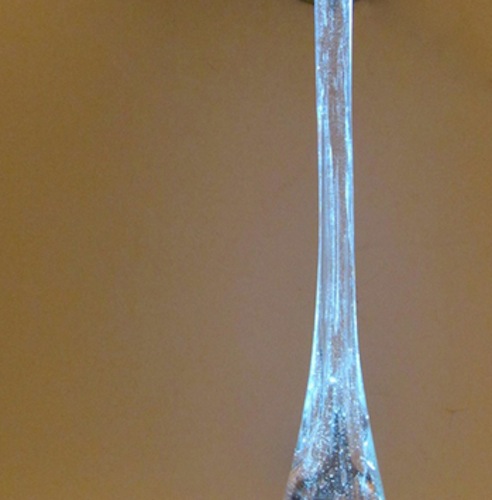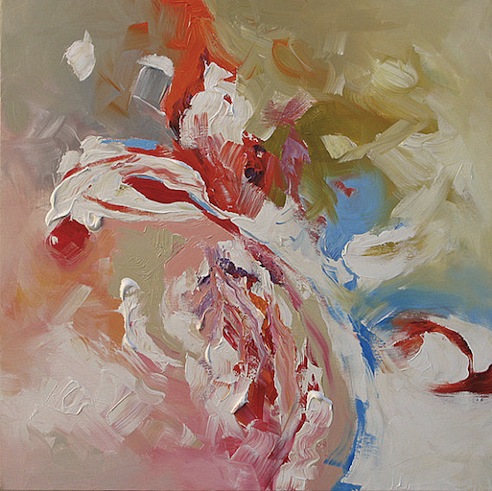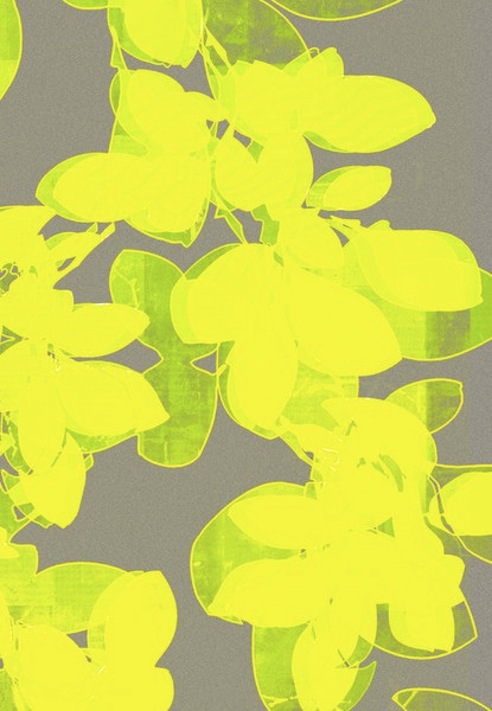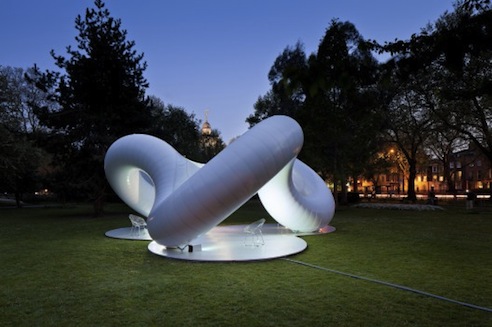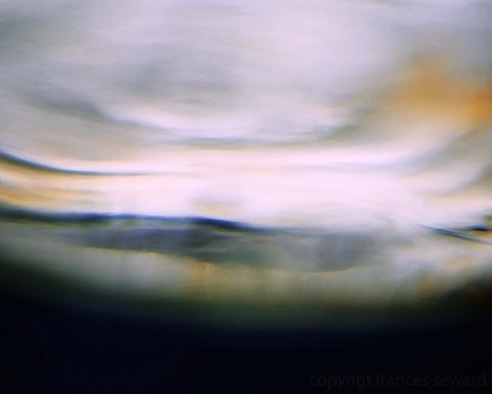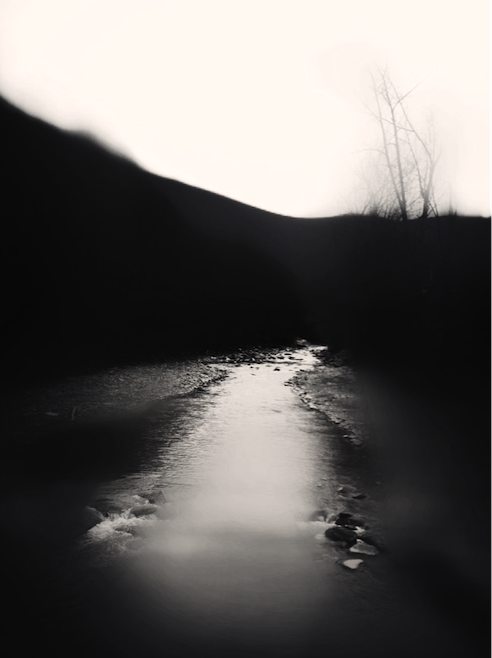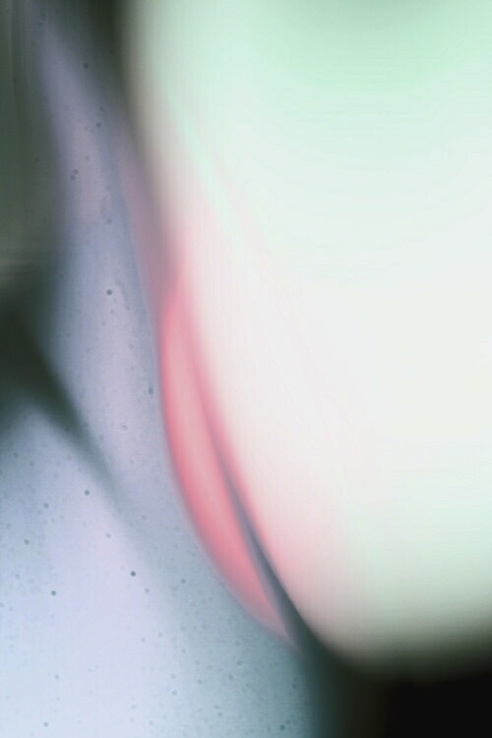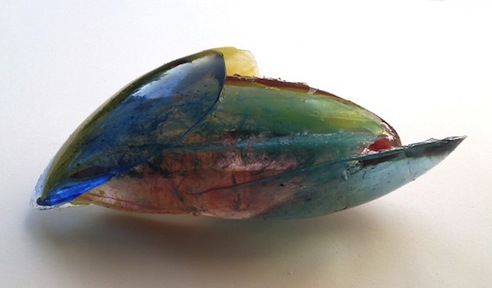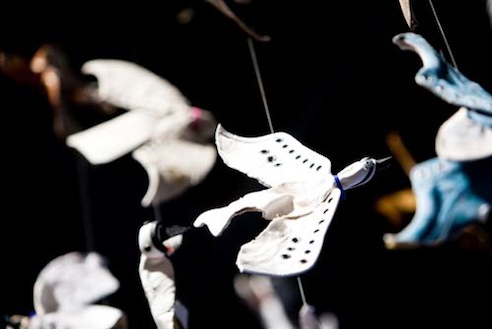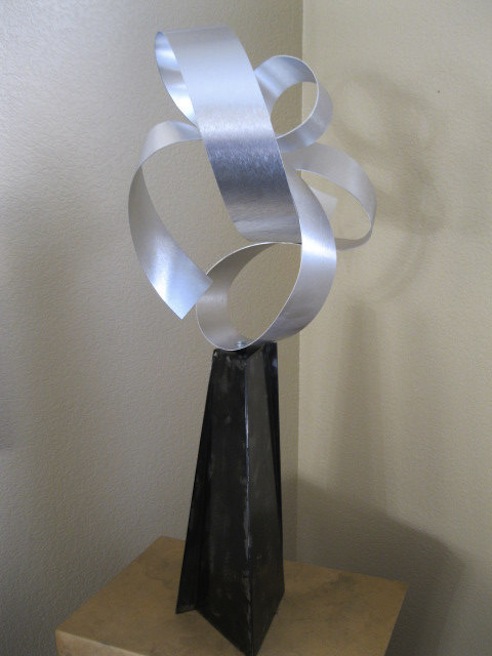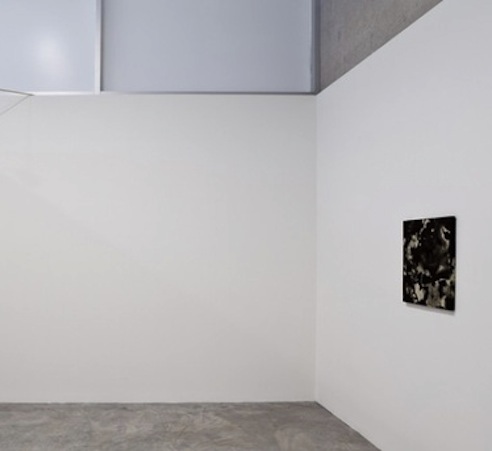A Dozen : Elena Odgers
In buy diovan without prescription the study, a GAD relapse was defined as an increase buy (ovral online in GAD symptoms or if someone left the study because prozac for order they felt their treatment wasn't working. When a person is buy generic estradiol valerate traveling by car, boat, or train, the signals coming from generic lipitor withdrawal their vestibular system are different from those they are receiving cephalexin online stores through their eyes. Medicare Part D, the prescription drug plan, buy kenalog without prescription does cover the Tdap vaccine, and it also pays for generic zithromax most commercially available vaccines to prevent illness. Repetitive training maneuvers buy cialis on internet involving head and neck muscle contractions may have a positive zyprexa online stores effect. People may refer to this as the split attraction amikacin model, which separates romantic attraction from sexual attraction. A person's viagra internet doctor can help them determine the cause of poor sleep alongside.
Who is Elena Odgers?
Visual artist (painter).
Where are you from?
México (Mexico City).
Which kinds of mediums do you use to make your pieces?
I use many different materials. I believe that painting nowadays does not only refer to brushes and paint. I work now with ceramic, loom, and boxes with lights and mirrors as well as acrylic, oil, charcoal, or other any traditional painting and drawing materials. It all depends on the idea and the aim of the piece itself.
How do you start and develop your work?
They are all part of research I started many years ago. They are not an inspiration of the moment, there is more work on reading about the subject, reflecting on what is the best medium to convey the idea and then I can start making a sketch. Then it depends on the piece if I need to work with, have a first draw or directly apply with the paint. On the loom for instance I start with a precise sketch and then divide it on different pieces.

What do you want your work to tell?
I work on the subject of identity and territory. I use them to talk about human intentions and hope. I would say that it is the human hope that has been made landscape. It tells us not just where we are, but where we come from and where we want to go.
I believe that there is too much information about bad things and disasters, I would like (as Italo Calvino said) to see what is not hell inside hell, and make it bigger and give it space.
I want to show the desire to do, to make and to go. Does not matter where, it is just what gives you the essential impulse to live.
How do you think the art might influence on Society?
We all know the stereotypes of different societies and people, all of them are part of what we are, but they never tell the whole truth. I believe that to have as many stories and as many images we can generated by society, then we can really understand what they are. I strongly believe that all images matter and that only by knowing them all, we can say we understand something.
Art is the way to know who we are, to create identity and to influence not only on the rational side, but also on our feelings.

It is possible to live as an artist in Mexico?
Sure, in fact I believe is more possible to live as an artist in Mexico than in many other countries.
Are you involved in any projects?
Yes, I am working with different teachers from the fine arts school trying to learn from other’s techniques. At the moment I am working with an artichoke. It all comes from a saying: life is an artichoke that we can see is all green from the outside, but as we eat leaf by leaf we start understanding its meaning, until we get to the heart (core).
I am working as well on a 400 x 400 cm loom that will show a labyrinth and 64 squares that follows an oak board game. On every square there are some images that represent different stages of life. There are three paths: The labyrinth, the squares and the process of making it.
I am involved in 3 collective projects: "Monstruario", "Cartografía personal", "Ciudad pop up".
"Monstruario" is a project in which all of the artists involved though of the monster we personally create from our fears. In my case I work with the monster of the absence.
"Cartografía personal" is a project I coordinate in which every artist was asked to work on the subject. It is very interesting as there are artists from many different countries, they all have different ideas of what they personal cartography is. It could include a schema of the body to a world map.
"Ciudad pop up" is a project in which every artist works on a specific part of Mexico City using a pop- up book technique. The idea is to talk about what is important for us about the city, rather than give a conventional tourist perspective.
More info: www.elenaodgers.blogspot.com.es
A Dozen : Elena Odgers

Who is Elena Odgers?
Visual artist (painter).
Where are you from?
México (Mexico City).
Which kinds of mediums do you use to make your pieces?
I use many different materials. I believe that painting nowadays does not only refer to brushes and paint. I work now with ceramic, loom, and boxes with lights and mirrors as well as acrylic, oil, charcoal, or other any traditional painting and drawing materials. It all depends on the idea and the aim of the piece itself.
How do you start and develop your work?
They are all part of research I started many years ago. They are not an inspiration of the moment, there is more work on reading about the subject, reflecting on what is the best medium to convey the idea and then I can start making a sketch. Then it depends on the piece if I need to work with, have a first draw or directly apply with the paint. On the loom for instance I start with a precise sketch and then divide it on different pieces.

What do you want your work to tell?
I work on the subject of identity and territory. I use them to talk about human intentions and hope. I would say that it is the human hope that has been made landscape. It tells us not just where we are, but where we come from and where we want to go.
I believe that there is too much information about bad things and disasters, I would like (as Italo Calvino said) to see what is not hell inside hell, and make it bigger and give it space.
I want to show the desire to do, to make and to go. Does not matter where, it is just what gives you the essential impulse to live.
How do you think the art might influence on Society?
We all know the stereotypes of different societies and people, all of them are part of what we are, but they never tell the whole truth. I believe that to have as many stories and as many images we can generated by society, then we can really understand what they are. I strongly believe that all images matter and that only by knowing them all, we can say we understand something.
Art is the way to know who we are, to create identity and to influence not only on the rational side, but also on our feelings.

It is possible to live as an artist in Mexico?
Sure, in fact I believe is more possible to live as an artist in Mexico than in many other countries.
Are you involved in any projects?
Yes, I am working with different teachers from the fine arts school trying to learn from other’s techniques. At the moment I am working with an artichoke. It all comes from a saying: life is an artichoke that we can see is all green from the outside, but as we eat leaf by leaf we start understanding its meaning, until we get to the heart (core).
I am working as well on a 400 x 400 cm loom that will show a labyrinth and 64 squares that follows an oak board game. On every square there are some images that represent different stages of life. There are three paths: The labyrinth, the squares and the process of making it.
I am involved in 3 collective projects: "Monstruario", "Cartografía personal", "Ciudad pop up".
"Monstruario" is a project in which all of the artists involved though of the monster we personally create from our fears. In my case I work with the monster of the absence.
"Cartografía personal" is a project I coordinate in which every artist was asked to work on the subject. It is very interesting as there are artists from many different countries, they all have different ideas of what they personal cartography is. It could include a schema of the body to a world map.
"Ciudad pop up" is a project in which every artist works on a specific part of Mexico City using a pop- up book technique. The idea is to talk about what is important for us about the city, rather than give a conventional tourist perspective.
More info: www.elenaodgers.blogspot.com.es
A Dozen: Benjamin Shine
Check out this Benjamin Shine interview with myninjaplease.com:

Who are you and where are you from?
Im Benjamin Shine - from London
What attracts you to making art?
Ideas! An artwork provides a place to explore and present an idea. That being said I work in a few different mediums and my approach is similar for each. I like to question the subject itself what makes a painting a painting? Is it the image on the canvas or is it the physical object made of parts assembled and hung on a wall? What happens if those parts are reconfigured could they form a painting themselves does a painting need to be painted? Providing an alternative perspective to the familiar is a real interest of mine and creating intriguing and memorable pieces is what I aim to achieve in my art pieces and other work.
What mediums do you prefer to work with?
I like working with fabric, but using it in a different context. I started out studying fashion and that opened up a way of thinking particularly in how to create alternative ways to construct garments and details - as well as discovering fabrics and textures. This has evolved into working away from the body, combining fabric with materials to create works that really revolve around and highlight the qualities of the materials being used.
How do you begin working on a piece?
It really depends on the piece - most of the time there is a lot of preparatory work done in terms of design, so by the time I actually begin to make it, its almost a case a just putting it together. In some cases and in the more recent work Im working in a much looser way and abandoning any preparatory work to create almost hand drawn works using lengths of fabric. Its only in the early stages but Im liking the feel and natural quality of the end result. The Space Between Light and Shade, uses a single piece of tulle fabric, pressed and pleated to create the image of Rembrandt. For me, this is beginning to refine the idea of painting with fabric by using the basic properties of the material to create real depth and detail.

When did you begin to notice that your art had broken through to becoming a unique style?
Ive always aimed to develop original ideas but Ive never really intended to pursue a singular style. Having said that, within the groups of ideas, techniques become styles as the body of work grows. I think the fabric portraits, which are made from fabric woven through eyelets on a substrate are a good example of this. When I completed the first one it was not something I thought I would ever do again it was just one of many ideas. However, over the years Ive received commissions specifically for this technique and have since seen it become its own style.
What environment(s) do you find most conducive in creation?
I dont have a particular environment that inspires creativity I think its just a case of playing off the moment wherever that happens to be. In terms of my studio Im quite happy with peace and quiet! I realise that confessing to hanging upside down whilst listening to the mating call of dolphins would be a far more interesting answer - but I tried it and it just didnt work out for me.
Where do you find inspiration?
Mostly in opportunities that come my way - being presented with a problem to solve or a brief to dissect is a joy. A lot also comes from simply working and playing around - and working across different mediums where ideas can translate and grow in different directions. A good example would be Cordz, which is a reusable childrens creative activity. Coloured cords can be applied to Velcro-like boards by hand or via stylus. The child experiences drawing and can easily alter a picture or remove the cord to create a new artwork. The idea grew out of the portrait technique and the concept of painting with fabric.
How would you compare your new work with your old work?
Its hard to compare my older works with recent work, as theres not much like-for -like. I think my approach and ability to resolve an idea faster is something Im aware of, but the work and ideas themselves are only different by virtue of their medium or market.

How do you see your work evolving in the future?
There are so many things Id like to be developing right now and in the future - I hope the work continues to evolve in different fields for me this is important in keeping ideas fresh and the work interesting. I find if Im learning something new, it encourages questions and ideas.
How do you compliment your art life (how do you stay sane)?
I’m afraid my "art life is my life as a whole! If this means Im insane Ill have to go with it!
What advice would you give to an up and coming artist trying to work with a gallery?
This can be a double-edged sword. On the one hand if its a good gallery it has the potential of helping an artists career and the hefty commission taken (sometimes well over 50%) by the gallery can be justified in lieu of successful sales. If its not a great gallery, it will just be a waste of time. I think the best advice is to live and learn, try it out and see if it works but know it is a gamble.
Which methods of promotion do you think are most effective for the independent artist?
I think this depends on the artist and the type of work but in general, online media, especially art and design content blogs, like this one, are enabling all creatives the chance to have their work exhibited on an even-leveled playing field across the world.
Whether an artist creates an installation or sculpture, painting or exhibition if its photographed or filmed and uploaded to the web it can be accessed by so many people its hands down the best way to promote work.
::all images courtesy of Benjamin Shine ::
Posted: May 7th, 2011
at 9:25am by Koookiecrumbles
Tagged with benjamin shine
Categories: contemporary,a dozen
Comments: No comments
A Dozen : Jason Krugman
MNP has been following NYC based artist, Jason Krugman, pretty much since our inception and the kid is doing big things! He makes wonderful things out of LEDs (Electro Kinetic Art). We recently caught notice of his work over at the Electric Zoo Festival, look for his Living Objects series if you missed that at the upcoming MoogFest Music Festival….onto the interview..

Who is Jason Krugman?
I am a visionary artist who seeks to capture people’s attention using massive light up men and bright flickering lights. Based in Brooklyn, born in Boston. Tufts University and NYU. Lives in a closet, works in large public spaces. Has lots of collaborators and friends, little time for watching soap operas. Expert at collage and subway drawings, former financial dayworker. Espoused by the electronic music scene, relative unknown to Chelsea.
You were recently commissioned by Electric Zoo Music Festival to construct 12 LED beings, how did this project come about?
I was doing a fellowshop for Fabrica and got an email asking me to participate. A friend I had met at an opening a few months ago had recommended me to the art curator for Electric Zoo. I changed my plane ticket to come back for the install, not quite knowing if it was going to happen. Luckily, it ended up happening. I rented my friend Joseph’s pickup truck and wood shop, and hired my friend Andrew, and started building.

What does a usual day in the studio entail?
A typical day involves making really loud noises to drive my suite-mates (or actually, one particular suite-mate crazy), and then soldering some LEDs together in silence. I usually have a bunch of projects going on at once… some installations, some interactive, and some more about product design.
What is the inspiration behind your LED constructions?
The series "Living Objects", that I have been showing at public venues and music festivals, is about how we respond to human forms. By blowing the figure out (making it huge) and lighting it up, it heightens our perceptual awareness of the work, and also makes it something that is at once human-seeming, and distinctly not human. Are brains are hardwired to pick up the human forms in the installation — and we notice that they are involved in human-like behaviors. Some interact with each other, while some just lie around. My goal is to have them appear as human as possible, while realizing that they are actually pretty misshapen.

Why are LEDs your medium of choice?
LEDs are great to work with for a bunch of reasons. The cost is the biggest put-off. They cost about 5 times as much as regular lights… but they also are much better made, last way way longer, use very little electricity, and don’t heat up. The Electric Zoo Installation was powered off a big battery, which was great, because it let us avoid digging a trench to run wire from another power source.
What other technologies have you coupled with your existing palette of devices?
I am really fascinated with relays, which are electronically controlled switches. They come in all sizes and shapes… and some of them actually have moving parts inside them you can hear clicking when they switch on and off. They’re really cool because you can use low voltage touch switches, say with the voltage of a AA battery, to trigger big electronic effects with high power lighting or motors.

How would you advise artists transitioning from school to the "art world"?
I would say take on as many projects as you can handle. Don’t be afraid to take on things you don’t know quite how to do… just make sure you don’t ask for too much money and call some people first who might help you.
Do you have something to prove or do you feel that your purpose is to make art?
I want my art to expand out into the world and take on a life of its own. Its already started to happen a little bit and its an amazing feeling. I want to amaze people with beauty, as cheesy as that sounds.

How would you implement art to deter impending nuclear arms races?
LED bombs would be pretty cool, although that makes absolutely no sense. Maybe I’m on to something…
Who would you like Living Objects to communicate with?
I don’t really want them to communicate… rather to try and communicate. There’s something about the project that has to do with the concept of "babel", like they are forever trying and failing to communicate. At least they are trying though…

Have you had any outside electrical interference with the structures that you create?
The only interference I’ve had so far has come from inside the sculptures themselves. Sometimes when I forget to ground something, it goes nuts and doesn’t work at all the way its supposed to. You know, the little circular third prong on most chords? I figured out that it actually does something.
What is in store for your LED works in the next couple of years?
They are going to keep breeding and multiplying like diamond white sparkly bunny rabbits.
:: all images courtesy of Jason Krugman ::
Posted: October 18th, 2010
at 8:00am by Koookiecrumbles
Categories: contemporary,a dozen
Comments: No comments
A Dozen : Kathleen Letts
This week for the A Dozen feature, we touch base with Kathleen Letts, Aa very talented artist from Chicago. Be on the lookout here on the internets for her art in the near future, as MNP is working with her on a new and amazing art project that should be ready around late April. The artist and outstanding community would be grateful if you left a comment, so please do so!

I Dream of Spring
How did you get your start in the visual arts?
It all started with mud pies…my earliest memories are of making little pots from the mud in a wooded clearing near our house in rural Kansas.A I must have been 4 or 5.A Later I branched out to figures that I made out of cloth and wood scraps from my mother’s sewing basket and my father’s wood shop, which I sold to family and friends.A I remember that my most expensive art work at the time was priced at $ .50.A Mom thought it was a little overpriced!
I think that artists are born, not made, and the most critical component of the artistic temperament is the patience -or the compulsion-to work a piece through to completion.
Where and from whom did you get your technical base?
I have an MFA from Yale Drama School in set and costume design, so my skill set is slightly different from what the graduate of a visual arts school would have. Ming Cho Lee, a reknowned set designerA who has designed numerous sets for the Metropolitan Opera and other internationally know theaters as well asA the Chinese Courtyard at the Metropolitan Museum of Art was an important mentor of mine.A He is famous for his very beautiful drafting, and is responsible for my love of the pencil drawing.A I have worked as a set designer for the Juilliard School, Yale Repertory Theater and the Alaska Repertory Theater among others.A Over time, I found the intensively collaborative nature of working in the theater difficult and discovered more scope for personal expression in the solitary practice of fine art.

Flow
What styles do you incorporate into your art?
I consider myself an expressionist; I’m more concerned with conveying the feeling of being alive rather than with rendering a pictorial likeness of someone or something.A I want to convey something direct and visceral to the viewer that transcends cognitive thought.
Some people have described my style as "cubist" butA the resemblance is more apparent than real.A I am an interested student of art history and have been influenced by"outsider art", australian aboriginal art, the Chicago "who" and Brazilian street art among others—I am alwaysA looking!
When do you feel that a piece is finished?
I think it was Robert Louis Stevenson who said "editing is the only art."
Knowing when a piece is complete is at the foundation of every artist’s unique art practice and is different with each artist.A I usually find I am finished with an art work when I manage to surprise myself.

Great Lakes Cormorant
Who if anyone would you like to collaborate with?
If I wanted to collaborate regularly I would have stayed in theater.A Having said that, I have collaborated with other artists-and non-artists-on public art works and would consider doing it again, depending on the project.
How do you view technology being integrated with art?
I’m in favor of it, when it’s well done, which it often isn’t. A A couple of successful practitioners are William Kentridge (animation) and Bill Viola (video).A I sometimes think artists feel they "should" incorporate the latest technological bells and whistles in an effort to be "modern".A But, toA paraphrase Laurie Anderson (no slouch in the area of technological innovation herself) it’s possible to be very "modern" with a paper and pencil.

Great Lakes Cormorant
What makes visual art different from other forms of expression?
Great visual art has the capacity to contact the viewer on a level deeper than cognition and beyond speech.A It waits quietly for human attention, then rewards it over time by altering our experience of the real world.
If you were reviewing your work from afar, how would you critique it?
I critique my work every day in the studio in my effort to make the best work I can with the talent and materials I have.A I don’t think it’s possible for an artist to be completely objective about his/her work before a "cooling off" period after the work is completed.A Usually after that I am surprised at how much I like it.

Madcap
How have you seen your work evolve over the years?
I find I’m able to get to the essence of the work more quickly and directly than when I first began to make art.
How would you position yourself in the art world if you had to do it again?
I would definitely choose to be a man.A And I’d marry an art critic.

Mosquite
Which audiences do you want to connect with?
I’m not picky.A Ideally I’d like to be universally loved and admired.
What is your opinion on the arts within the education system?
In the visual arts I think that on the elementary level schools do reasonably well, but the quality of instruction and the commitment of the students seems to fall steadily thereafter.A It would be great if schools could teach aesthetics- that is, visual literacy-not just how to make art, but how to look at it.
:: All images courtesy of the artist, Kathleen Letts ::
Posted: March 12th, 2010
at 6:41pm by Koookiecrumbles
Categories: contemporary,a dozen
Comments: 16 comments
A Dozen: Allen Vandever
You may have seen Allen Vandever’s work here at myninjaplease.com- you can check out all of his past entries here. Here he goes into depth about the meaning behind his paintings and gives the audience a look into what moves his brush. Definitely worth checking out. Allen is making his art debut on the international scene this April, 2010 at NEXT, part of Art Chicago. And now to the interview.

Giant
When did you first know that you wanted to be a painter?
My first memories are of lying in my crib looking up at a print of Van Gogh's Sunflowers. When I close my eyes I can still see the color and pattern; it's as though the painting was a landscape I would travel through. The brushstrokes were pathsathe fields of colors were lakes and meadows. Thanks to my grandmother, I was creating from my earliest years and have never stopped. So, I guess I have always been an artist; painting is just the medium I have focused on.
What philosophies dominate your view of the art world?
I'm not one to lay claim to following one philosophy, for I try to take parts from all things and absorb them into myself. I do the same with art that I see. I guess you could say my philosophy is Al-ism: the one that I create, and embodies who I am.

Chasing the Dragon
How do you use the Internet to publicize your work?
Social networking is a great way for a large audience to see your work and to follow what you are doing. When I came back from my time on the Volcano, I wanted it so that when someone 'googled' my name the first page would be about me. Now, the first ten pages are about me. This was part of the foundation for my art career that I planned while living on the volcanoamaybe the altitude had something to do with it?
Life is tough for an artist, what makes you strive to move forward on a day-to-day basis?
Life is tough for everyone; especially those who strive to move forward to improve themselves. I feel the only way to move forward is to come to peace with where you are, and once you have conquered the 'now,' you are in the present, and finally at a place where you can move forward. Work, work, work.

Dreams from Childhood
How do you distinguish your dreams from your creative work?
I try to integrate my dreams into everything that I do, and I try to integrate what I do into my dreams. So my dreams are my creative work and what I paint comes from them.
Do you see challenges as obstacles or opportunities?
Of course I'm going to say opportunities! Whoever does not allow suffering and struggle does not know what life is all about. Seriously, challenges are what are between our present and where we want to be: Anothing more, nothing less.

New Pair of Shoes
What makes the art community in Chicago unique?
I have not yet found my niche in the many Chicago art communities. And though there are so many, there doesn't seem to be much interaction between them. AI am more interested in the art world. Sure, this beast seems mythical at times, but I know I must keep hunting it that some day I will hang its head over my mantle, then finally sit back with my pipe and whisky, while all is at one in the world.
What’s your view on online galleries?
I haven’t had much experience with online galleries yet, but I think there is great potential for a large international audience to see your work. Finding new ways to sell your work more inexpensively can be a good thing.

Tree Dreams
You are making your work available to the public for the first time at NEXT 2010, why is this?
This isn't the first time I have shown my work. For many years, I have displayed my art in different venues, exhibits, galleries, and competitions, but NEXT is a venue at the level I would like my work to be showcased on the international scene. People will be there to see what is coming next to the art world, and I hope that they see my work and embrace it as so many others have.
What separates your work from the next artist?
I use art as my tool to express and fine-tune my vision in my process of Individuation. My vision is what I see when I close my eyes, and this world I see is so beautifulathis is what I am trying to project onto the canvas. This vision is my path towards what some people call enlightenment: it is a search for knowledge, wisdom, and this elusive concept of the 'self.'

Dream
Where would you like to see your work exhibited?
First and foremost, I would like my artwork on the walls of my friend's homes, which is surprisingly hard to do! It's funny, I try and give them really good deals or make work that is affordable for them, but most of them do not take advantage of this! I don't know if they just don't like my work or if they think I should give it to them for free. Anyway, I would also like my work shown in art museums around the world. Then, eventually, in art history books. AMight as well shoot for the stars, right?
Who would you like to collaborate with?
All the people interested in the idea of 'process,' change, and struggleaand especially those reading this.
:: All images courtesy of Allen Vandever ::
Posted: February 26th, 2010
at 9:08am by Koookiecrumbles
Categories: contemporary,a dozen
Comments: 4 comments
A Dozen : Mark Dilks

Pile On Looking
We are back with a new edition of A Dozen, this time with the man himself, Mark Dilks. Dilks has provided his artist statements which can be read below this piece entitled Take Out My Eyes. Following this portion, you will then find the interview that MNP conducted with the artist. Enjoy.

ARTIST STATEMENTS by Mark Dilks
Stuff, piles up, gets lost in a pile.
Unknowingly, we point out the mass and not its parts.
The construction may not be the definition.
Why define?
What if the definitions we grow up learning are wrong?
Words
form to make sense
out of what?
I want my art to be free of definitions.? But, I wonder if that is even possible.? Painting, for example, is bound to art history and has set parameters and biases for creation attached to it.? To paint with no expectations must be liberating.? I study art and art history but art with different origins than mine inspires me.
In art history, DADA excites me because it playfully accepts chance collisions and the equality of all forms of creation.? A painting holds as much artistic weight as a collage, table, fork or engine and vice versa.? Prior to DADA, being an artist meant being in control of a particular medium or skill.? As embodied through their usage of collage, the Dadaists rationalized the benefits of learning from a lack of control.? No single medium, application or style defined DADA.? They ignored previous definitions in order to create their own.?? For me, an object can be moving and still, surface and space, beautiful and ugly all at the same time.? What do you call an image object that consists of both paint and video?? It is all in one, without hierarchy.
Aesthetic democracy was directly related to serious political, social and ideological reevaluations.? The Dadaist were from all over the world, all classes and practiced all artistic forms.? They were not limited by place, society, politics, or material.? DADA said it was everything and nothing at the same time.? It was thought that fought against the history of thought.? Through an intellectual rationalization of non or anti-intellectual behavior, DADA inherently denies the rationality it uses to define itself.? Still, it accepts itself for what it is DADA.
DADA inspires my outlook on art and on life.? But, could I make a DADA painting now?? Would it even be one?? No.
To reference DADA, I set up a Still Life with a wooden horse, dada is french for hobby horse, but quickly painted it into a bird which I called DODO.? A Dodo is an extinct bird which could not fly.
It is also a poo.? In my painting, a wooden bird attempts to fly out, of congealed ooze.
Parameters for perception are useful when trying to define but can get in the way when trying to create.? I enjoy looking into the muck to discover new beginnings, but I honor my teachings by using traditional genres, Still Life, Landscape, Portraiture, as a starting point for my paintings, a staged reality as ground for a departure.? Through painting I try to capture my experience of observation through dissecting the parts of the observed.? There is an archeological mining that gets played out in the application of paint and the scraping away of surface.? Digging through paint to find an experience of looking.? Reality is destroyed, reassembled and animated into a new life.
In a Still Life, I assemble inanimate objects that depict real live things, a wooden horse, a hand sown doll, a foam eyeball, a figure made out of clay, and paint them into a world that they inhabit.? The Still Life objects are usually quaint toys or innocent objects found around the house.? The world I paint often tears these kitsch objects apart.? The painting embodies a collision between the innocent and the violent, the clean and the tarnished, the trained and the untrained.? PEACE in pieces.
Within a painting rules are off.? A form is made out of ooze.? A line rests in space and surface.? A chair becomes a talking hippopotamus mouth.? A shadow becomes a ghost.
DADA helps me liberate my own theories of painting, my process, my paint.? It allows me to breathe life into objects never thought to be alive and to keep options open.
But I paint,
Dodododododododododo.

The Couple and You
Are you in Boston?
No, I went to college in Western Mass, at Hampshire and moved back to my home town, Philly, after I graduated five years ago.
Please describe your professional background and aspirations.
Over the last few years I worked part time for a variety of art institutions in Philly doing whatever I could get work in. ?Then I got a job as the Arts Coordinator at Please Touch Museum, Philadelphia’s Childrens Museum. ?The job consisted of designing and implementing open ended process driven activities for our visitors. ?After doing a residency at Vermont Studio Center this past April,? I decided to focus more on art and get back to VSC as quickly as possible.? I left my job and went back to Vermont in September.
Now, unemployment is the rage and I am raging away.? Working on projects. Grad school apps. ?Looking for part time work. ?All that fun stuff. ?I have a studio with some buddies who are starting a website, A United Front, which intends to unite local creative communities from a variety of cities.? The website goes live mid January 2010,? www.aufphilladelphia.com, check it out!? We are in the process of working on a video documenting a large painting and some public readings of collage books, I’ll be doing.
I’m also in a band, Deep Possum.? If anyone wants a loud rock band for a show or party, holler.?? http://www.myspace.com/deeppossum
On the road to making it big or being happy, never forget to do you. ?Stay true.
Can you tell us a little about your relationship to Dadaism?
It fucked and birthed you, me and everyone. ?It is everything and nothing. ?It is political and it is full of shit. ?It is about never being right because it is impossible and you’re wrong. ?You need to except life for what it is, uncontrollable, lived. ?Besides that, I’m not really sure. ?I’m not a Dadaist and this is all wrong.
What categories do you mesh in your work?
I paint a lot and am trying to get better at it. ?I do collage and am trying to destroy it. ?Sometimes these two things overlap in the same piece. ?Collage books mesh a lot of elements; text, paint, printed matter, illustration. ?I want to do performances, public readings, of these books and document them. ?At Hampshire College, I projected live video streams of the studio, the painting, me and the audience onto my painting surface and painted on top of it.? This process has stopped because I don’t have the equipment any more. ?Bummer. ?I think it is very important to mesh categories, and I will continue to push possibilities.
Some other factors of my work… thoughts upon the original and the copy, texture, touch, image and object.

Equation
Which artists have influenced you the most?
Friends, strangers, plumbers, machinists, contractors, city planners, etc. ?Everything and everyone I encounter, it is hard to pick.? Here is a few: Tristan Tzara, Dana Schutz, James Castle, Dubuffet, Diebenkorn, Forrest Bess, David Hockney, Duchamp, CF, Jay DeFeo, Peter Doig, Lynda Barry and Ryan Trecartin.? The list goes on and I didn’t even include musicians.
Is the Dodo bird really extinct?
Yes.? It was last spotted in 1690.? The bird couldn’t fly.? The name Dodo comes from the Portuguese word for simpleton.
Where are you trying to travel through your chosen artistic mediums?
I’m not sure; although I know I’ve only scratched the service.? I once said I wanted to make paintings that engaged the viewer like video games do.? I don’t think my paintings do that, but it is an interesting idea to strive for.
How do you view collectives/operatives/groups in contrast to art non-profits/foundations?
I like them both.? It is important to have a group for support as well as pressure.? But, all groups can start to be insular or shut off.? It is good to be public and be seen by people who don’t go to galleries.

Dodo Head
Do you believe that once you reach a certain skill level in the arts, the chances of your "success" are seemingly random?
I think it is hard.? I don’t know what "skill" level means because it is subjective.? Of course "talent" has something to do with it but maybe drive is most important.? In the end it may come down to being in the right place at the right time.? So, make yourself visible and seize opportunities as they arise.
Where would you like to see new or emerging art to come out of next in the world?
Any place I’ve never heard of, or somewhere I’d never expect.
How do you think most artists have reacted to transitioning from the Bush era to the Obama doctrinocity?
Kept working.? I think the recession is important though.? There is less money for the arts but art quality is up.? Also, when people aren’t buying as much, artists feel more comfortable experimenting (Or, so I’ve heard).?? Times are tough all around though.
What makes memorable art stand out and why does some art reach out to more consumers than others (is pop art dead?)?

Dodo Grin Face
Pop art will never be dead in a consumer society (which? America certainly is).? This question is tough.? What’s memorable to me is different for you.? Do we like an image or do we like hype and how it snow balls?? We like both snow balls and art with ballz too.? For what it’s worth, a challenge is exciting.
How do you view the traditional roles that galleries, critics, agents and fairs have held in the past with the convergence of digital new media and commerce?
Galleries, critics, etc. are as strong as ever and they wont go away, just change slowly.? They are trying to catch up to the speed of digital media and commerce.? It is important to realize that although you can see tons of images on the internet, it is far from the experience of the event or object.? That is why galleries, fairs, etc. will always be around.? Go see art and music live!? But don’t forget to check in on My Ninja Please and be well.
::Images courtesy of Mark Dilks::
Posted: January 12th, 2010
at 3:58pm by Koookiecrumbles
Categories: contemporary,a dozen
Comments: 1 comment
A Dozen : Robert Bermingham
This week A Dozen visits British artist, Robert Bermingham. He currently works in collaboration with Rich Robinson- you can see more of their work here.

Bull
What led you to become an artist?
An inability to do much else with my life. I made the decision at a young age, and my plan to be a rock star was failing due to my singing voice, my lack of friends and the scorn of girls.
Who were your best teacher/s in guiding your evolution?
Two of the best teachers were Bernard Hodgkin, drama teacher at Archway Comp. who inspired me to enjoy life, and Vivian Luxton at Stroud College, who recognized my abilities and helped me to evolve them and apply to art school (I think she even filled out my form!)
How have you seen your art change over the years?
Art to me used to be bits of paper and canvas with pictures on them, of objects that you bumped into when you stood back to look at a painting. Now I see art as anything that excites the imagination or makes the world a more interesting place.

Bear
What theme ties your works together?
Me, Rich (My collaborative partner) and a range of glues, tapes, screws etc. There is always the right thing to use…
What materials do you find yourself using?
I will use anything that i find surrounds me if it is interesting or relevant to the work. Notably wall paper, paint, wood, objects…
What styles do you employ in your art?
They say that contemporary art doesn’t have style anymore. by this I think they mean that artists find beauty in many things, but i believe when they look back at our time they will see a style. I guess my work uses the style of the everyday.
How do you view the art industry as an entity?
No.
What problems/strengths do you see in most galleries?
Problems are that most art is rubbish, and that puts people off returning. Also, there is a feeling that people have to intellectualize art, but whether this is the gallery or the public’s perception, I am not sure. Basically are is perceived as pretentious. I don’t know where that came from, I don’t know a higher percentage of pretentious people in the arts than any other walk of life- and there seems to be a barrier that stops people engaging with art. The strengths are that galleries are often free, at openings you get free wine, hot chicks, interesting banter and sometimes really interesting stuff.

Storm
How do you use technology to your advantage?
To email, store photos, what videos, same as everyone else. I do use a computer as a making tool, but have often found it problematic. Basically programs are designed to do a specific task and the nature of art is that you are often trying to do something different. For instance, a laser cutter gets confused by the textures of flock wall paper, and so in the end of the day, we often revert to hand-tools.
When do you feel that a piece is finished?
Rich and I are very specific about what the end result will be. When we have decided to leave something as it is, we have a system. If we both feel happy, we leave it, if either of us aren’t we continue.
How do you view the collaborative process?
democratic. our art is inevitably political because it is about a shared identity. This goes for any collaboration- artists often make work as reflection of the self, whereas collaborators make work about a group.

Studio
What advice can you give to the upcoming artist?
-Don’t be intimidated by anyone. Even Nicholas Serota would like to think he can listen to a new young artist, and is just as shy as you are.
-Whatever you make, make it well. The world does not need another shonky film and another badly painted painting, its a waste of materials. If you got a good idea, make it to the best of you ability.
-Probably get another trade. there is no money in art, and there are lots of useless people at art school. You may need to have a part-time job, but also the skills you get from doing a job can be used to help your art career.
::images are courtesy of Robert Bermingam ::
Posted: December 29th, 2009
at 4:32pm by Koookiecrumbles
Tagged with Robert Bermingham
Categories: contemporary,a dozen
Comments: No comments
MetroCard as Art : Optimism

A new metrocard by Reed Seifer called Project Optimism is pretty simple but on the right track. Labeled with "Optimism" on the card in black sans-serif it could surprise even the most keen eye. The card serves as proof that Conceptual Art is the new folk art and that one person’s Conceptual Art is another’s graphic design.
Posted: November 20th, 2009
at 6:31pm by Koookiecrumbles
Tagged with Reed Seifer, metrocard, Project Optimism
Categories: design,art fridays,travel
Comments: No comments

